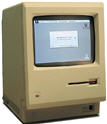Gartner's top 10 predictions on IT futures

Gartner researchers have identified 10 areas that IT professionals should pay attention to this year.
Gartner: By 2011, Apple will double its U.S. and Western Europe unit market share in computers.

Gartner: By 2012, 50 per cent of traveling workers will leave their notebooks at home in favor of other devices.
Our take: Indeed, smartphones are becoming smarter and growing into ultramobile computers that will continue to become faster, cheaper, smaller and more powerful.
Gartner: By 2012, 80 per cent of all commercial software will include elements of open-source technology.
Our take: That's a safe bet. Open source bits are everywhere in the commercial arena, and in the next few years will make up more of the software stacks and applications that are used in business.
Gartner: By 2012, at least one-third of business application software spending will be as service subscription instead of as product license.
Our take: Gartner may be a little aggressive in its forecast, but the writing in on the wall. Increasingly software-as-a-service becomes such a compelling business proposition that only the most paranoid will avoid it for mainstream applications. The capability to pay by the drink and easily move from one enterprise-class cloud to another will be the expectation in the next decade.
Gartner: By 2011, early technology adopters will forgo capital expenditures and instead purchase 40 per cent of their IT infrastructure as a service.
Our take: The key term here is "early technology adopters." For startups and new projects, purchasing infrastructure as a service, such as from Amazon, Joyent, HP, Sun or salesforce.com, will be common. As for the Big Switch from individual data centers to most infrastructure delivered to businesses like electricity, the ramp will be far longer.
Gartner: By 2009, more than one third of IT organizations will have one or more environmental criteria in their top six buying criteria for IT-related goods.
By 2010, 75 per cent of organisations will use full life cycle energy and CO2 footprint as mandatory PC hardware buying criteria.
By 2011, suppliers to large global enterprises will need to prove their green credentials via an audited process to retain preferred supplier status.
Our take: Saving the planet and increasing profits are not in opposition. Consuming less power and decreasing CO2 footprints are good for business all the way around.
Gartner: By 2010, end-user preferences will decide as much as half of all software, hardware and services acquisitions made by IT.
Our take: The line between personal and professional digital lives is blurring. It makes sense that productivity gains can be directly correlated to the quality of the user experience. As a result, tech vendors will need to make products that meet the needs of the actual users, not the engineers or purchasing agents. Software has to be purpose-built for humans, not machines.
Gartner: Through 2011, the number of 3D printers in homes and businesses will grow 100-fold over 2006 levels.
Our take: Gartner is talking about printers that can carve the designs out resin blocks. Given the uptake is low now, growing 100-fold shouldn't be a stretch.
Gartner doesn't mention "social networking" in its predictions. I'll add one--by 2012 social networking will simply be part of the Web fabric, just like the index of documents.